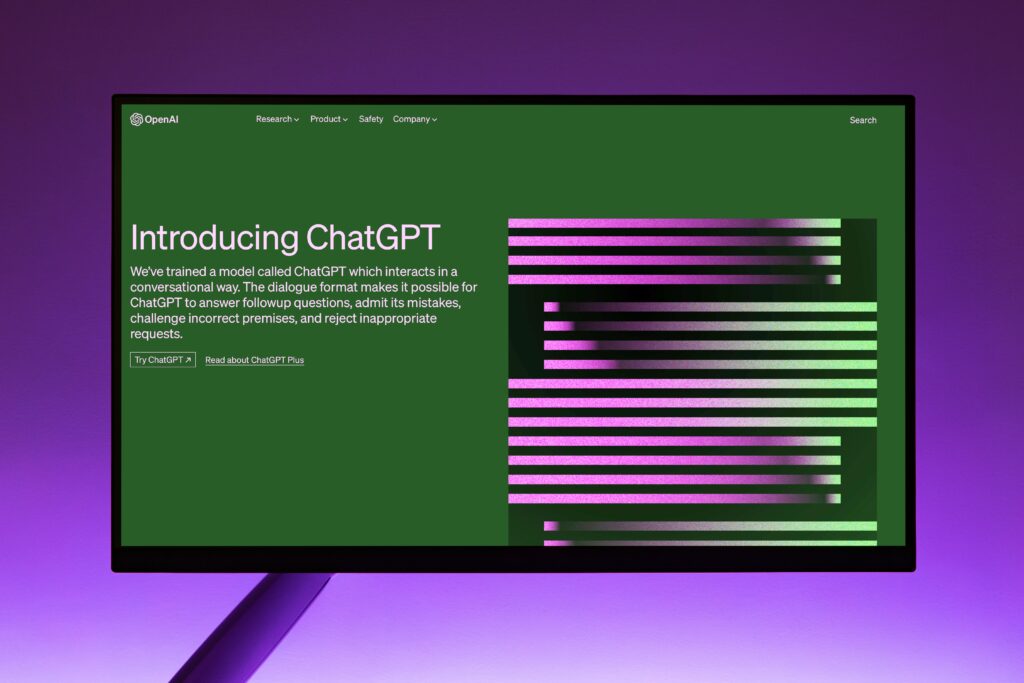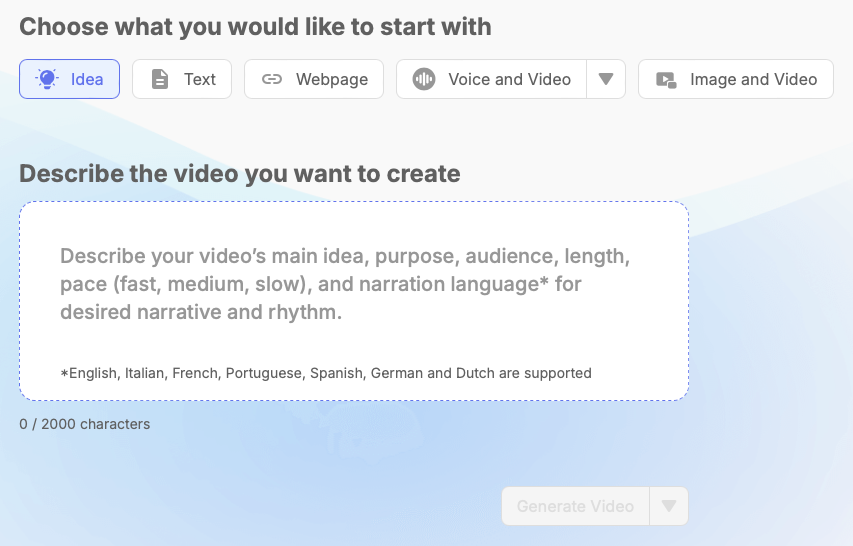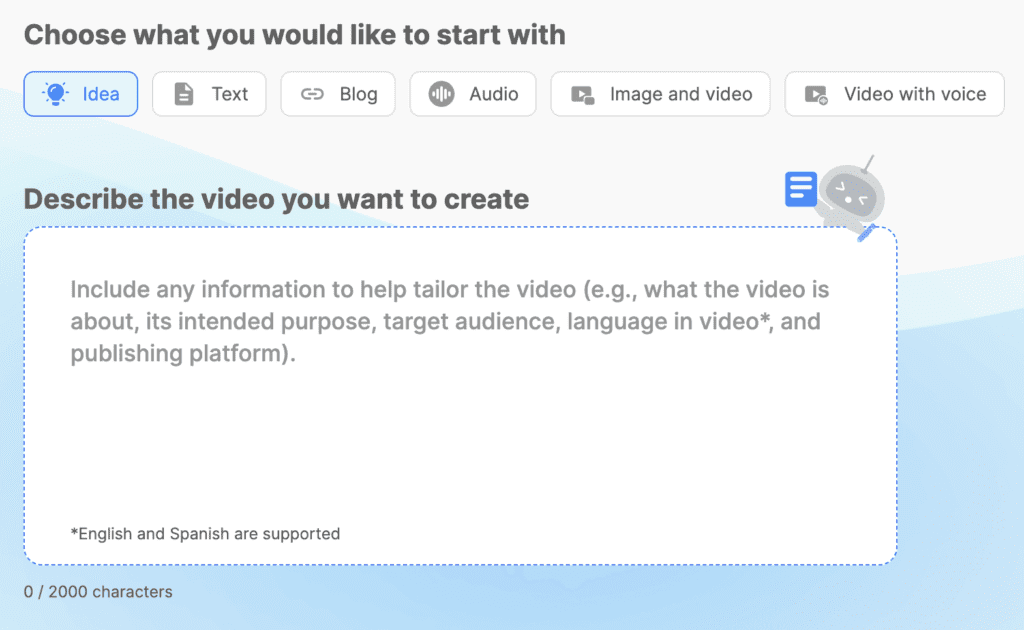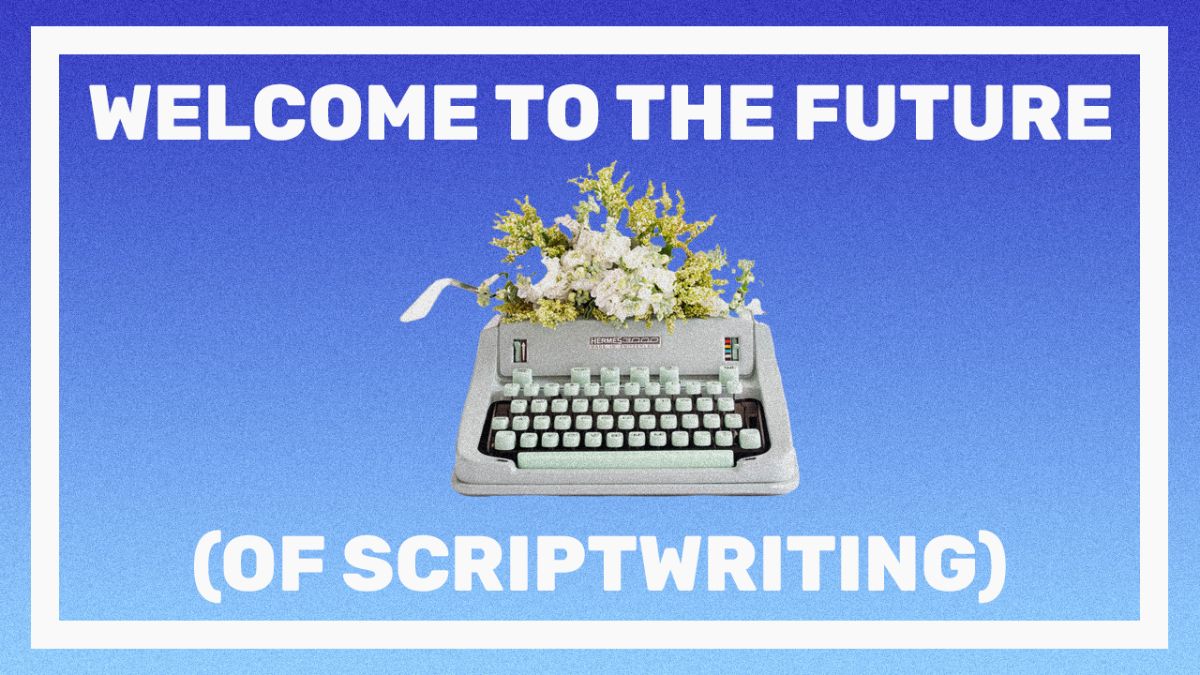By Melinda Xiao-Devins
There’s no doubt about it: Artificial Intelligence (AI) is revolutionizing many industries, including video creation and scriptwriting. As the chief AI architect at Visla, I’m thrilled to guide you through this transformative journey. Now that you’ve learned about the fundamentals of scriptwriting, you can dive into the future of this craft.
AI is more than just fancy new tech; it helps everyone tell stories. Powerful video editing platforms like Visla use AI to do everything from polishing scripts to choosing the best stock footage. The process of video production has never been easier or more efficient.
Whether you’re a marketer, business owner, or tech enthusiast, come and take a look at the future of scriptwriting. The future has never been brighter, and it’s your business that can benefit.
The Evolution of Scriptwriting
A script serves as the backbone of any video, especially if that video has narration. Language is the best way to convey ideas and deliver messages without ambiguity. In the business world, clear communication is paramount.

Scriptwriting has a rich history, guided by well-established norms and principles. But what if AI rewrote that rulebook?
At Visla, we’ve harnessed AI to revolutionize the scriptwriting process. Our platform offers a suite of features that simplify and enhance video creation.
The beauty of AI lies in its ability to augment human creativity. It serves as a powerful assistant, capable of analyzing data and suggesting narrative structures quickly. If you tell an AI to help write you a script, it will do just that. This democratizes scriptwriting, making it accessible to creators of all kinds.
The Science Behind AI in Storytelling, Explained
The journey of integrating AI into scriptwriting has been a fascinating one, filled with both challenges and breakthroughs.
Years ago, I experimented with a Long-Short Term Memory (LSTM) Generative Adversarial Network (GAN) model. I trained it on scripts from the TV series “Friends.” While the model could generate text, the output was far from coherent—sentences were jumbled and meaningful words were few and far between.
Fast forward to today, and the advent of transformer-based Large Language Models (LLMs) has elevated the capabilities of AI in scriptwriting. Think of the Generative Pre-trained Transformer (GPT) model that OpenAI has created. These models are trained on vast datasets, enabling them to generate coherent and contextually relevant text, which is crucial for scriptwriting.
What Makes Large Language Models So Good?
One of the most remarkable features of LLMs is their ability to perform “few-shot learning.” Unlike traditional machine learning models that require extensive fine-tuning for each task, LLMs can adapt to new tasks with just a few examples. This adaptability is a game-changer, making AI more versatile and efficient.
Another innovative approach is Reinforcement Learning from Human Feedback (RLHF). In this method, human evaluators rank the model’s output, and this feedback is used to fine-tune its performance. This iterative process improves the model’s performance, making it more aligned with human-like understanding and creativity.
ChatGPT, Please Write Me a Script
So, what makes these tools so good at scriptwriting? Well, there are a few reasons.

GPT models are great at following instructions. They can understand and execute complex tasks based on simple textual instructions, making them incredibly versatile. This feature is particularly useful in scriptwriting, where specific guidelines or styles may need to be followed.
Fine-tuning also allows the model to improve its behavior, making it more reliable and safe to use.
The architecture and training of GPT models make them good at handling a vast variety of topics, styles, and tones. This is crucial in video scriptwriting, where business needs can range from technical product descriptions found in instructional videos to the emotional storytelling of advertisement videos.
How Visla’s AI Can Help You Create Amazing Videos
Visla’s video creation and editing platform simplifies the video production process. You can now go from an idea to a finished video more quickly and efficiently than ever before, allowing you to focus on other areas of your business.

At Visla, we believe that AI should serve as a powerful assistant, not a replacement to people. Our platform is designed to empower you with AI-driven tools that simplify and enhance the video creation process. Here’s a closer look at what we offer:
Use Your Ideas
You can enter a prompt, and Visla will generate you a video. Optimized for creating short, impactful videos, this feature focuses on concise scriptwriting to retain audience attention and appeal to their emotions. It’s your go-to for promotional or educational videos.
Longer Text Works, Too
You can also input longer pieces of text to create videos. We offer two distinct options:
Bring your own script: You can import a script you’ve written right into Visla’s platform. Ideal for those of you who want more control over the scriptwriting process.
We’ll help you write your script: Input any document or article, and AI will use it to write the perfect script. Then, it’ll turn it into a video.
You can easily create a wide range of business-ready videos, from product promotions to instructional videos. Visla can handle anything from technical documents or user manuals to HR handbooks and marketing copy.
Turn Blogs Into Great Videos
It can be difficult to align your written and video content. Visla makes it easy This feature doesn’t just recycle blog content, but allows businesses to create companion videos based on website pages, explainer videos that summarize long articles, and even promotional videos for products featured in their blogs.
Audio Clips Can Become Full Videos
With this function, you can create concise video summaries from longer audio files like podcasts or interviews. You can also turn entire audio recordings into a long-form video for various business use cases.
Upload Your Own Images and Footage
With this feature, Visla is taking visual storytelling to the next level. The platform can use still images and footage to create concise, visually-driven short videos. It offers two approaches:
Video Montage: This creates an appealing blend of your own images and video, without narration. Ideal for silent product showcases, event highlights, and social media teasers.
Video with Narration: Or, you can use your personal media to create a video with narration. Perfect for product launches and real estate tours, adding context to the visual elements.
Our platform allows you to specify elements like pace, tone, and audience, giving you the flexibility to tailor the video to your specific needs. By offering these capabilities, we aim to democratize video creation, making it accessible to everyone.
Case Studies: Demonstrating the Power of Visla’s AI
Case 1: Blossom Bliss Florists
The business wanted to introduce their floral arrangements at Blossom Bliss Florists. They wanted a vibrant and delightful video that featured their fresh flower collections, custom bouquet preparations, event decoration, and delivery services.
The script that Visla generated captures the essence of the floral business while maintaining a tone that is both vibrant and delightful. It’s not just about listing services; it’s about creating an emotional connection with the audience.
This is where Visla’s use of AI comes into play. It’s able to write a script that elevates a simple idea into a compelling narrative.
Case 2: Introducing Visla
By providing the product description document of Visla’s AI video generator, it created a video that introduces its capabilities.
The script not only introduces Visla’s features but also engages the audience by posing a question and offering a solution. It’s more than a list of features; it’s an invitation to experience a new way of content creation. And, this is achieved without the user having to delve into complex prompt engineering.
In both cases, the users provided little input, yet the output was a well-crafted script that serves its purpose effectively. This is the power of Visla’s AI. It makes video creation accessible and engaging, without requiring expertise in scriptwriting or AI.
The Future of Video Creation with Visla
As we stand at the intersection of technology and creativity, AI is shaping up to be the game-changer in the video creation landscape. Beyond just streamlining the production process, AI is revolutionizing how we create, share, and engage with video content.
Visla is at the forefront of this transformation. Our platform harnesses the capabilities of the latest developments in AI, particularly LLM models like ChatGPT. These advancements have made it possible to automate the scriptwriting process, and at Visla, we’ve cracked the code on how to use these LLM models effectively.
Visla simplifies the intricacies of scriptwriting, transforming it into an automated, seamless process that enhances the quality of videos for all business use cases. We’re not just about making video creation accessible; we’re about empowering every user to tell their story, their way.
Why You Should Care About AI Scriptwriting
Scriptwriting is not just an aspect of creating videos—it’s the backbone. It’s the narrative glue that holds your content together, drives your message home, and keeps your audience engaged. No matter the type of the video, a well-crafted script can elevate your video content.
Visla is committed to simplifying this process. We harness the power of AI to automate scriptwriting, helping you create compelling, impactful videos. Our commitment to our users is clear: to make video creation accessible, straightforward, and effective.

Whether you’re a business owner just starting to use video to fuel growth, or a seasoned marketer assisting businesses with video production, Visla is here to support your journey.
Experience the future of scriptwriting with Visla today and see firsthand the transformative power of AI in elevating your video content.

